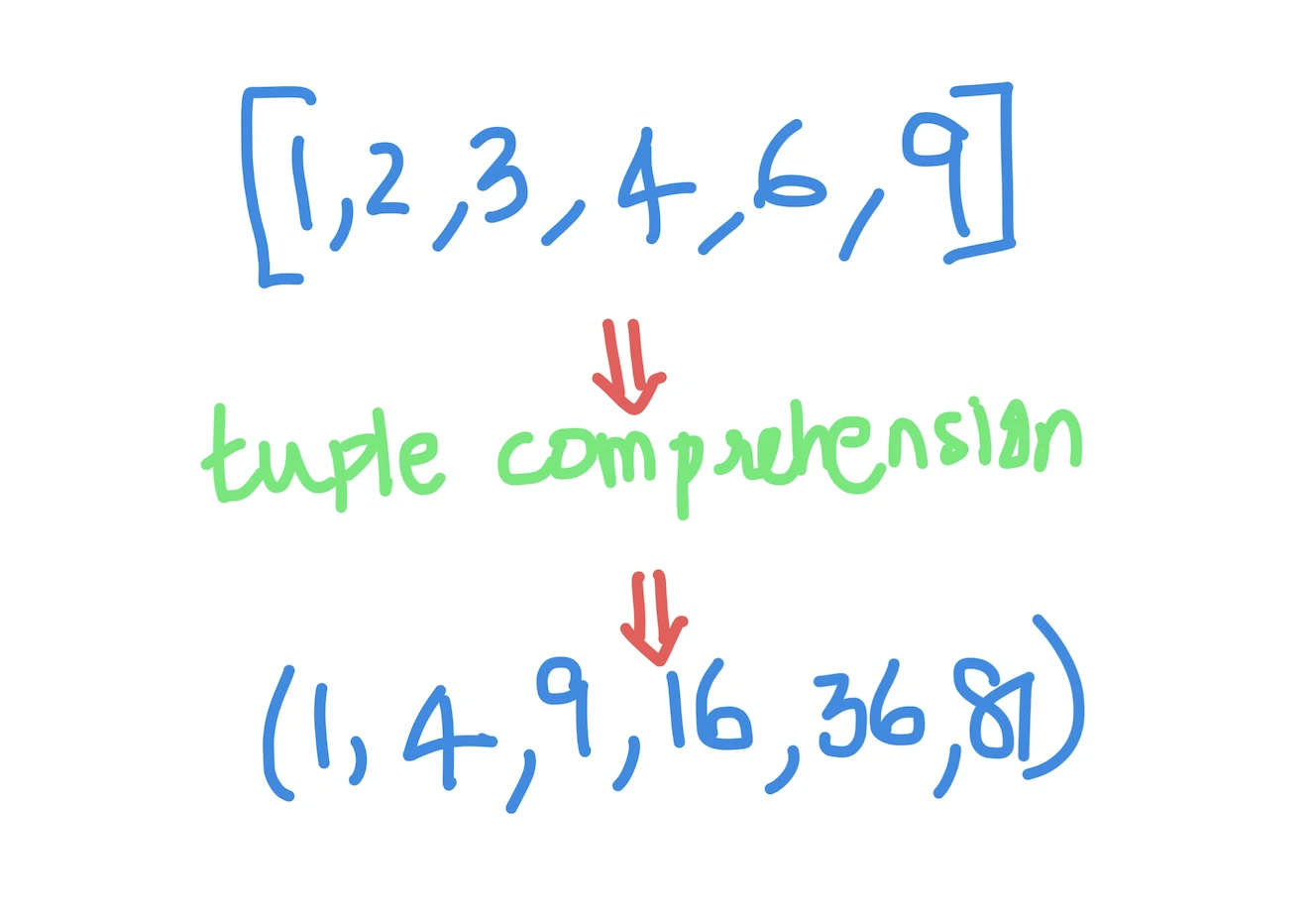Kodeclik Blog
Tuple comprehensions in Python
Tuple comprehension is a powerful feature of the Python programming language. It allows you to quickly create tuples from existing data structures, such as lists and dictionaries. This guide will provide an overview of tuple comprehension syntax, explain how it can be used to create complex data structures, and illustrate some common use cases for tuple comprehension.
Before we get into tuple comprehension, let us try to use list comprehensions. Let us suppose we have a list of numbers like:
Assume we wish to create another list which contains squares of these numbers. The easiest way to do it is using a list comprehension:
The second line is self-explanatory: it loops over the numbers list and for each number found there (in variable x) it returns x*x (the square) to be used in a list. The output is as expected:

A tuple comprehension aims to return a tuple instead of a list. If we replaced the square brackets with regular brackets, like so:
The above code works but the output is:
In other words, we are returned a generator object (because tuples are immutable). To obtain the underlying tuple, we need to wrap a tuple() constructor around it like so:
The output is now:
Thus we obtain the 6-element tuple we were looking for.
Thus the moral of the story is that a tuple comprehension works by iterating over items in a container returning tuples. We use the standard list comprehension syntax but with a tuple() function outside it to return a tuple instead of a list.
At its core, tuple comprehension is essentially just a shorthand way of creating tuples from existing data structures. Programmers use it to quickly create complex data structures from existing ones. The syntax requires only minimal effort while allowing you to achieve maximum results; plus there are many useful applications such as transforming one type of data structure into another or filtering out unwanted elements based on specific criteria.
The main advantage of using tuple comprehension is its simplicity - it allows us to quickly create tuples without needing to explicitly declare each element or use any additional code blocks like loops or conditionals. This makes our code more concise and easier to read which makes debugging much simpler. Furthermore, since there are fewer lines of code involved when using tuple comprehension compared with traditional methods such as loops or conditionals, there is less chance for errors which results in higher-quality code overall.
If you liked learning about tuple comprehension, checkout our blogpost on the Python hash function, especially how it applies to tuples and other data structures.
Interested in more things Python? Checkout our post on Python queues. Also see our blogpost on Python's enumerate() capability. Also if you like Python+math content, see our blogpost on Magic Squares. Finally, master the Python print function!
Want to learn Python with us? Sign up for 1:1 or small group classes.